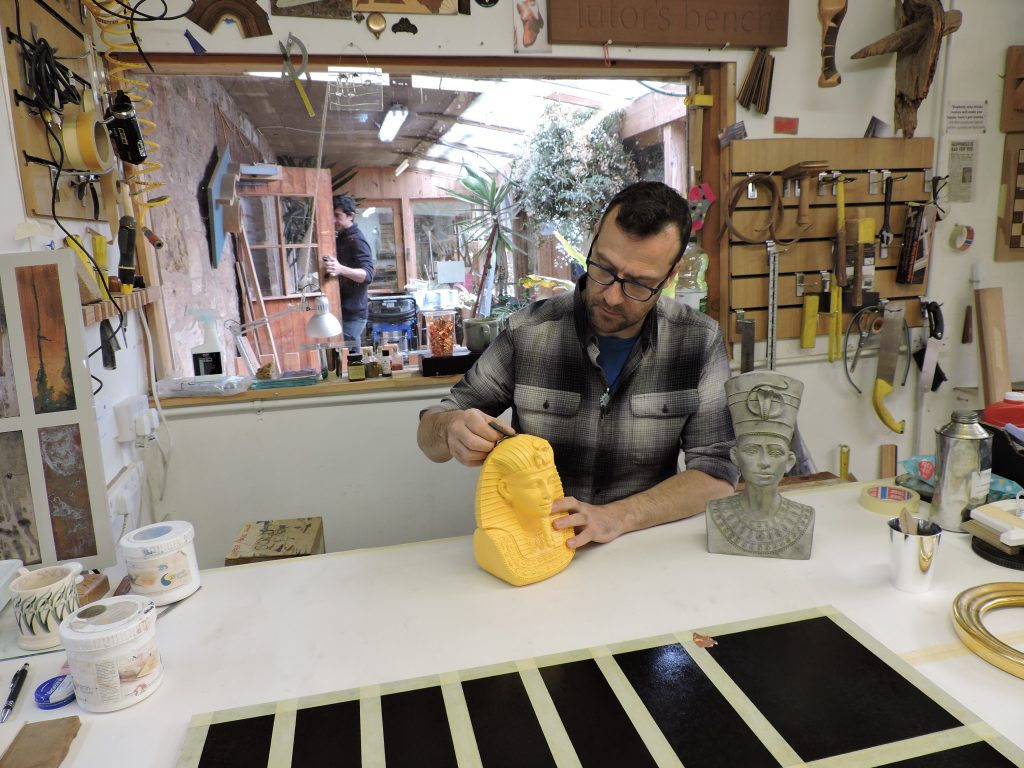This week and next our professional course students will be learning the ancient art of gilding.
We’re again privileged to have Richard Walker to teach this venerable craft.
Richard, who runs Watergild Studios, is one of Europe’s most highly regarded experts in this age-old skill.
He’ll be teaching our students all about oil-gilding, water-gilding and verre eglomisé, the art of gilding onto glass.
Oil gilding is the easiest method of gilding. Although it uses the same tools and gold as water gilding the finish cannot be ‘burnished’ and is not quite as brilliant a finish.
Verre eglomisé, or glass gilding, is where the gold is placed on the reverse side of the glass, allowing its reflective beauty to be fully appreciated.
Most usually, the highest quality of gilding, producing the best finish, is water gilding.
Water gilding is labour intensive, requiring several hours of preparation and the application of many layers of gesso and bole
There is also much sanding and polishing before the gold is applied.
Richard has been practicing and teaching gilding for nearly twenty years, and our students will produce a range of samples in solid and distressed finishes, using copper, white gold and pure gold leaf.
During the next two weeks, they’ll also learn how to use chemicals such as nitric acid to produce different effects and colours.
Gilding is perhaps the woodworking skill with the longest history, dating back some 4,500 years to the Egyptians.
They used gold leaf gilding to adorn, for example, tombs, coffins and sarcophagi.
As a tribute to their ancient skills, Richard has brought with him resin heads of Tutankhamun, the Egyptian pharaoh of the 18th dynasty, and Nefertiti, the Egyptian queen.
As a teaching aid, King Tut will be gilded in 24 carat gold, and Nefertiti in a variety of clay finishes.
Although gilding is not a core skill for woodworkers to acquire, it’s a skill that sets our students apart from many other furniture school graduates.
It also reflects our belief that it’s a craft that today’s woodworkers should learn, both to develop their professional careers and to keep this remarkable skill alive.
